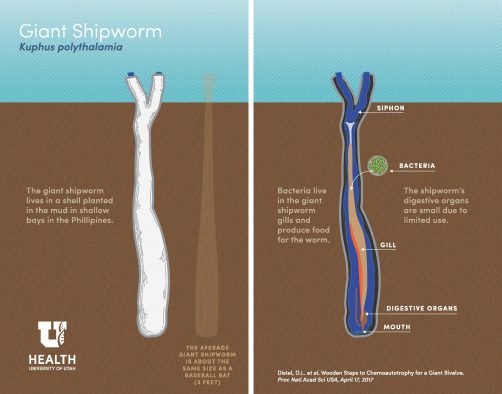Rare giant shipworm mollusk found in Philippine waters
While humans tend to believe that there’s nothing else new to see in our planet, nature tends to surprise us every chance it gets. Such is the case with the recent discovery of a rare type of mollusk in Philippine waters.
Called giant shipworms (Kuphus polythalamia), the existence of this mollusk has been known to the scientific community since the 18th century. It was first documented when 3 to 5-foot long tusk-like shells were found. However, scientists have been unable to locate a live specimen, until now.
The discovery of live specimen was made when footage of a Philippine documentary reached a research team from the University of Utah. The documentary featured strange creatures planted like carrots in the muddy floor of a shallow lagoon filled with rotten wood.
An expedition, led by professor Daniel Distel of Northeastern University, was then put together to find and study the rare mollusk. Those who took part in the study came from the University of Utah, Northeastern University, Drexel University, University of the Philippines and Sultan Kudarat State University.
“Being present for the first encounter of an animal like this is the closest I will ever get to being a 19th century naturalist,” says the study’s senior author Margo Haygood, a research professor in medicinal chemistry at the University of Utah College of Pharmacy.
The result of their studies was recently published online on the April 17 issue of Proceedings of the National Academy of Sciences.
The paper details that giant shipworms rely on beneficial bacteria in their gills that produce food for them. These in turn take in hydrogen sulfide gas around the molllusk’s preferred habitat. Hydrogen sulfide generally smells like rotten eggs.
While referred to as “shipworms,” the creatures are actually more related to mollusks like clams and snails rather than worms. The giant shipworms are the larger cousins of another type of shipworm mollusk that burrow in and feed on wood.
“For a biologist who’s interested in these bivalves, it’s like a unicorn,” notes Haygood.
Be they worm or mollusk, these alien-looking creatures are certainly a sight to behold. JB
